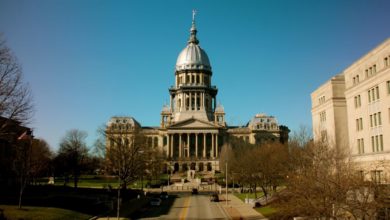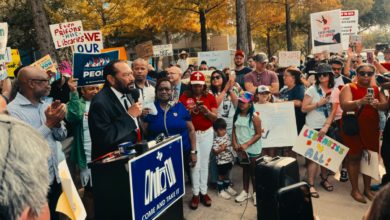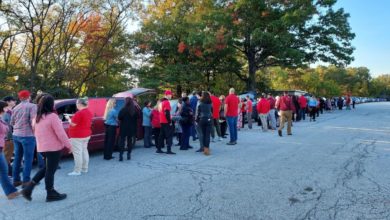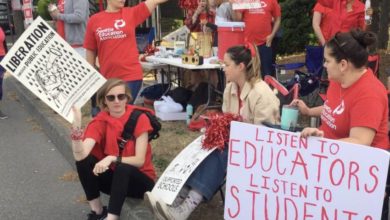Decades of “zero tolerance” policies in the schools have had a major impact on the country’s education system and the treatment of Black and Latino youth in particular.
Just as the outside criminal justice system turned towards mandatory sentencing and mass incarceration, “zero tolerance” doctrines in school require harsh disciplinary actions that include suspensions, expulsions and arrests. More offenses that used to be considered bad behavior are now cast as “crime” and mandate the intervention of law enforcement officers. There are more police departments with armed officers in the schools, which in turn use surveillance cameras, metal detectors, drug-sniffing dogs, and random searches of students.
As a result, students in oppressed communities interact with the criminal justice system at a much earlier age, and often have some record by the time they graduate. At least 70 percent of students arrested in school or handed over to law enforcement were Black or Latino. (Huffington Post, March 13)
Students with special needs have also faced many harsh penalties. Special education students represent 8.6 percent of public school students but 32 percent of youth in juvenile detention nationwide. Black students with learning disabilities are three times more likely to be suspended than white students with learning disabilities and four times more likely to end up in correctional facilities (NYCLU, School to Prison Pipeline)
According to Russell Skiba, an Indiana University education professor, “The data show that African American disproportionality [in discipline] is at its highest level ever and still increasing.” (Huffington Post)
George Galvis, an Oakland, Calif., prison activist, explained in a Jan. 8 “Rethinking Schools” article: “The more police there are in the school, walking the halls and looking at surveillance tapes, the more what constitutes a crime escalates. And what is seen as ‘how kids act’ vs. criminal behavior has a lot to do with race. I always think about the fistfights that break out between fraternities at the Cal campus, and how those fights are seen as opposed to what the police see as gang-related fights, even if the behavior is the same.”
How this is linked to capitalism
Public schools were created in the 19th century to train the youth of the working class with the necessary manual and technical skills, as well as authoritarian work discipline, to join the growing labor force and raise productivity for the capitalist class.
Over the last few decades, however, the shifting high-tech global economy has eliminated and outsourced millions of jobs. A certain number of working-class youth fight their way through college and attain white-collar positions, but large numbers quickly learn that the only jobs available to them are in the low-wage and permanently unstable service sector.
Oppressed Black and Latino communities have largely been funneled into this category, or into the ranks of permanent unemployment. The big corporations—and the politicians in their pockets—largely view these communities as surplus populations of “undesirable” workers. This is the material basis for two deeply related phenomena: 1) the mass incarceration phenomenon, by which the state locks up its “surplus” workers, and 2) the country’s highly unequal education system.
As the public school system in oppressed communities has become increasingly disconnected from job opportunities, with better-off districts channeling their students to higher education, these schools have been penetrated by the forces of state repression: the cops, the courts and the prison system. Rather than school offering the means for social advancement for all, it often serves to sort out who can be integrated into society, and who will be left out, with “high-risk” youth typically put on a fast-track into the prison system.
In recent years, many progressives have referred to this as the school-to-prison pipeline, although often without identifying it as a symptom of capitalism in the current era.
Data from the Office of Civil Rights in the Department of Education show that the number of students suspended and expelled from schools has almost doubled, from 1.7 million in 1974 to 3 million students in 2000.
Prior to the 1980s, all but the most serious violations generally were disciplined in-school. Supreme Court decisions repeatedly affirmed the Fourth Amendment rights of students, discouraging administrators from searching students without probable cause. By the turn of the century, federal legislation, backed by Supreme Court rulings, tied a district’s funding to its adoption of intensified “safety measures.” Students were stripped of many of their rights to privacy and due process.
The Party for Socialism and Liberation calls for the dismantlement of the prison-industrial complex and the school-to-prison pipeline. We oppose hypocritical “zero tolerance” criminal justice policies, which leave the real criminals and drug kingpins on Wall Street unpunished. We fight for a new system, socialism, in which poor and working people have the power, controlling and planning the economy and the education system for the benefit of all.






